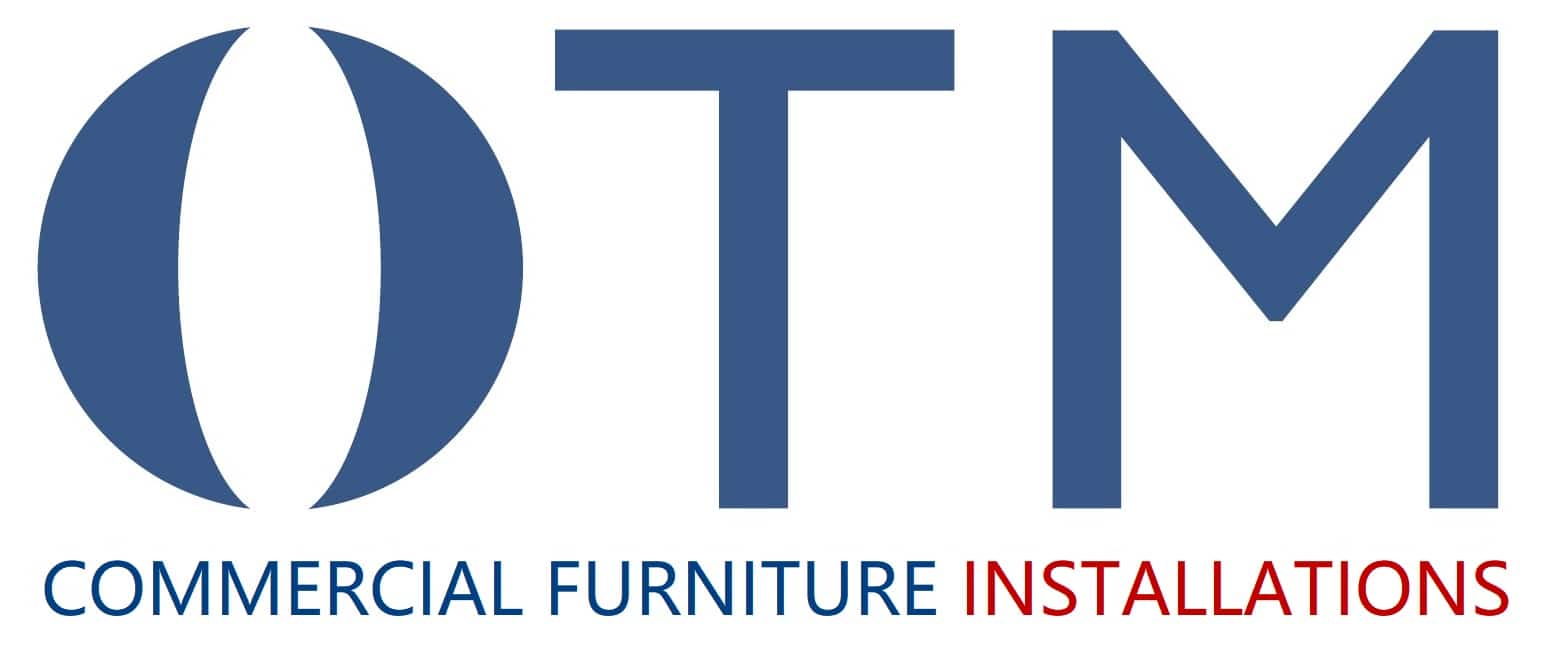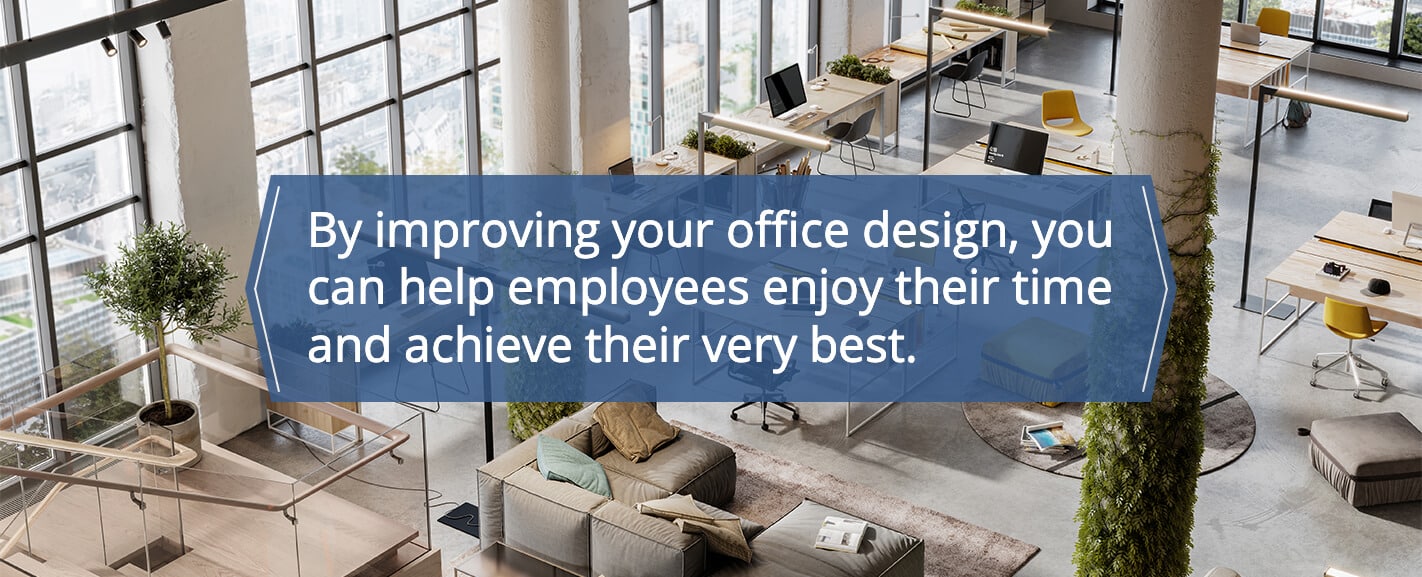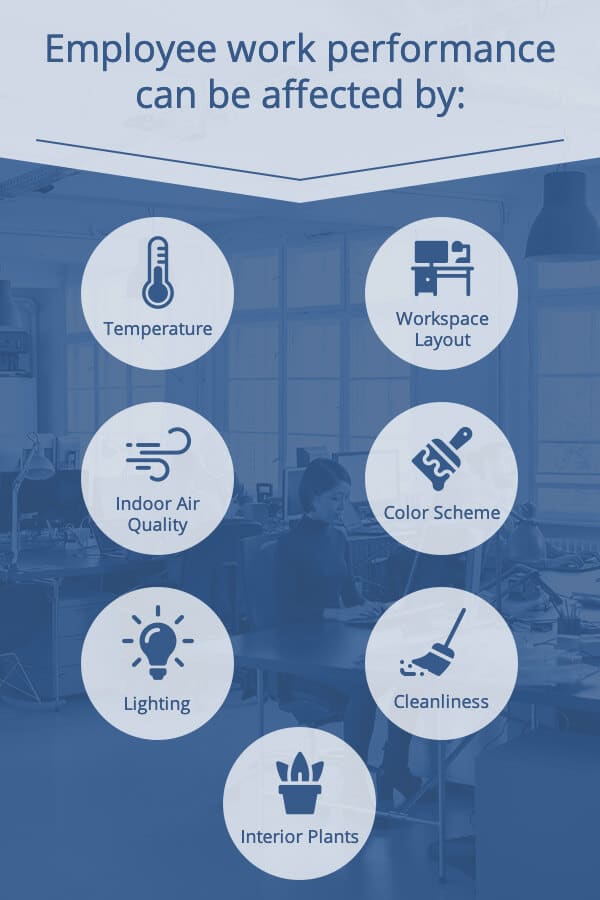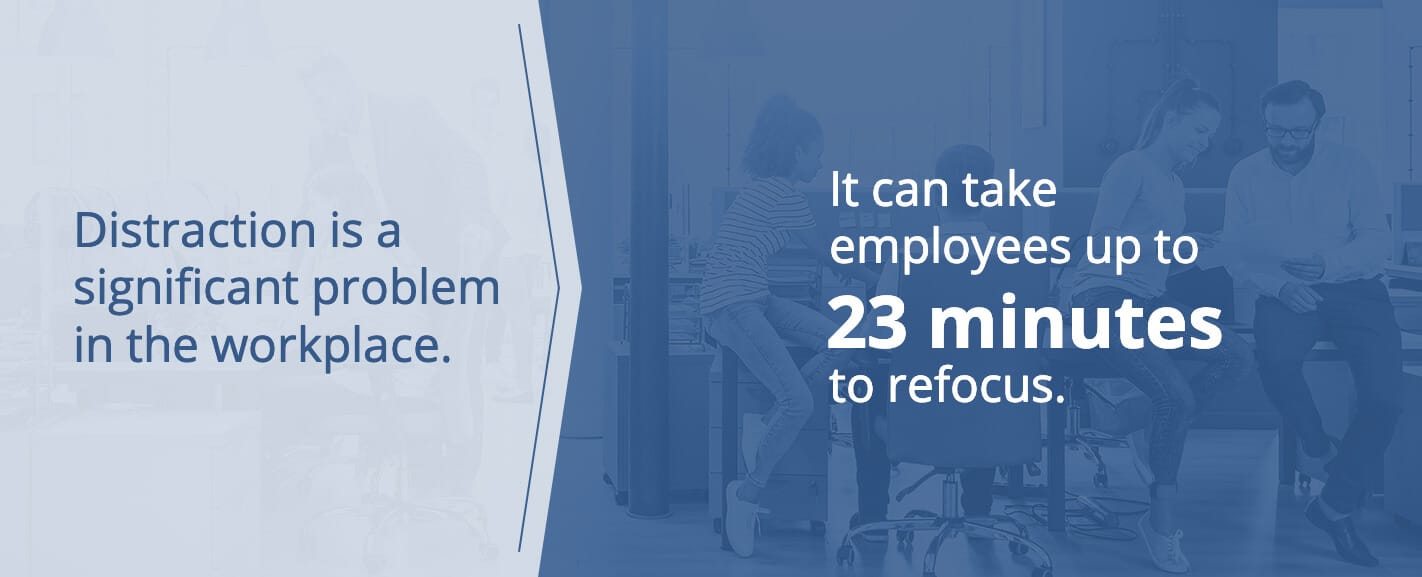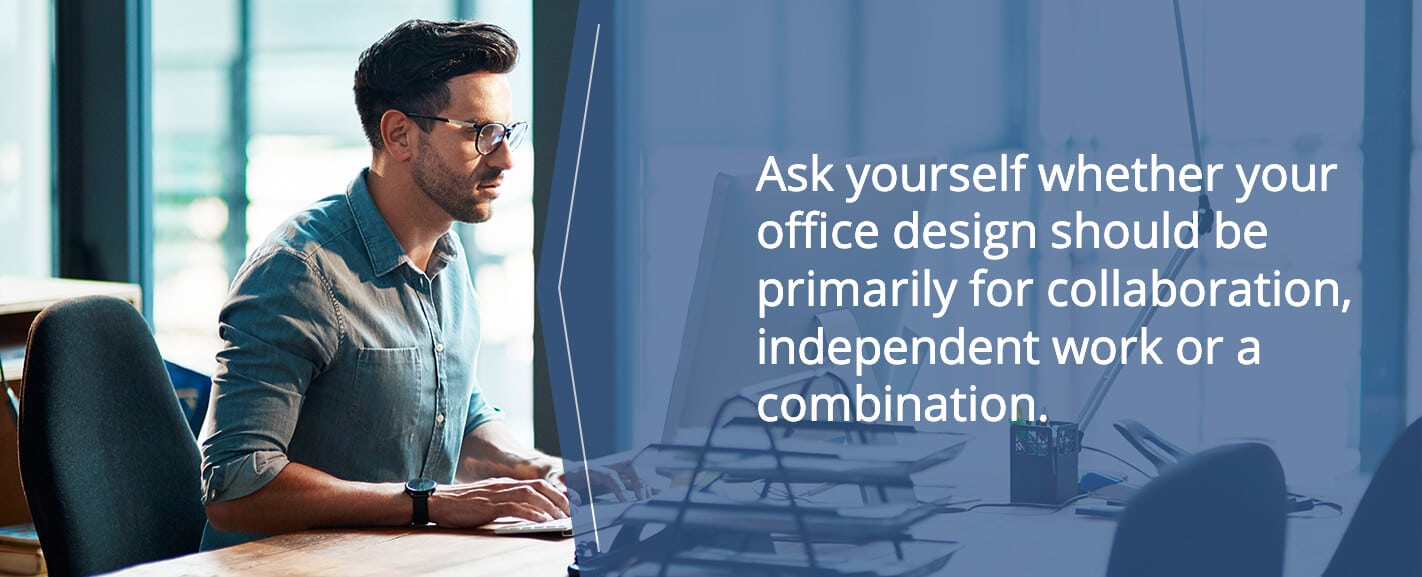If you’re an employer, chances are you regularly think about ways to help your employees be more productive. After all, productivity translates directly into your business’ success. Maybe you’ve tried motivational emails or keeping meetings to a minimum. But have you considered the role your office design plays in either hampering or enhancing employee productivity?
Office managers and COOs know tips for using office design to increase productivity, but you may still be surprised to learn how influential a person’s physical environment can be to their work performance. By improving your office design, you can help employees enjoy their time in the office more and achieve their very best while there.
How Does Environment Affect Productivity?
Achieving high productivity levels involves various factors, one of them being a person’s physical environment. You’ve likely experienced this firsthand. Imagine trying to complete a task in a cluttered, noisy environment versus peaceful, organized surroundings. Research has demonstrated a person’s work setting can make a significant difference in their productivity.
A 2011 literature review synthesized the research up to that point. It concluded that environmental factors like temperature, indoor air quality, lighting, workspace layout, color scheme, cleanliness and interior plants can all affect employees’ work performance. Since then, additional studies have continued to demonstrate the relationship between work environment and productivity. For example, a 2016 study found that the physical work environment determined 24.4% of the variability in employees’ performance.
A person’s surroundings can affect various aspects of their mental state. An environment that feels too bland, uncomfortable or distracting can cause employees to daydream about leaving work early or what they’ll do that weekend. On the other hand, an engaging and comfortable atmosphere can help employees tap into their motivation and creativity and optimize their work performance.
Office Design Tips for Increasing Employee Productivity in the Workplace
The ideal work environment for one employee may be different for another. You can follow some general principles to improve your workplace productivity. Whether you’re designing a new office or redesigning your existing office, incorporate design features to minimize distractions, facilitate work processes, boost mood and energy levels and enhance your team’s comfort and well-being.
1. Minimize Distractions
Distraction is a significant problem in the workplace and can interfere dramatically with productivity. It doesn’t take much to distract most people. A co-worker passing by, a quick phone call or a noisy conversation within earshot can compromise an employee’s concentration. It can then take up to 23 minutes to refocus.
That’s a lot of lost time, especially considering how frequently workplace distractions can occur. One survey found that 70% of employees feel distracted on the job. There are two main ways to minimize workplace distractions.
- Use soundproofing: Some of the top distractions employees identify in their workplaces are office noise and chatty co-workers. Soundproofing measures are an excellent way to reduce these distractions. You might go as far as installing completely soundproofed booths or including more soft, sound-absorbing surfaces throughout your office, so noises don’t reverberate as much throughout the facility. You can also provide employees with noise-canceling headphones to help them achieve a deep state of focus.
- Include private spaces: Employees need privacy to block out distractions and focus on their work. If you have an open office, think about designating areas where employees can work in isolation when they want to immerse themselves in their task. Or, consider installing dividers or opting for cubicles in your office. Adding dividing walls between employees is also crucial to prevent the spread of illnesses in your office.
2. Facilitate Work Processes
Productivity can look different from one company to the next. Think about how your team defines this concept, and how you can best facilitate that through your office design. What work processes should you optimize your office for? One essential consideration is whether you should design your office primarily for collaboration, independent work or a combination of the two.
- Collaboration: If your employees regularly team up to solve problems and make progress, you need spaces designed for collaboration. Consider creating dedicated collaborative spaces like conference rooms or lounge areas. Remember, open benching systems aren’t the same as specific collaboration spaces. Open offices have become increasingly popular, since prevailing wisdom says they make office spaces more collaborative. However, researchers have found that entirely open offices aren’t the freeing, collaborative work environments designers intended them to be. Designate specific areas where teams can collaborate.
- Independent work: In some professions, in-person collaboration is a minor part of the formula for success. Instead, employees need individual workstations where they can concentrate and work quietly on their computers or take calls without distracting those around them. These spaces may be individual offices or cubicles, for example. Choosing an open office design can be disastrous for a company where employees need to focus on independent tasks.
For many companies, the right recipe is a combination of collaborative spaces and independent workstations, allowing for more flexibility. The secret is to understand what work processes are a necessary part of your company operations and how you can facilitate these for employees.
Beyond the macro concerns of collaborative and independent work styles, you should also consider the ideal workstation setup employees need to do their jobs. Do they need access to a whiteboard? Dual monitors? Storage space for office supplies? By providing your employees with the setup they need, you can give them the tools to succeed. You don’t want employees to strive for productivity despite their office space. Instead, the space should aid in employees’ productivity.
3. Boost Mood and Energy
Multiple studies have shown what you probably already know from firsthand experience: Your mood impacts your productivity. When employees are happy in their offices, they’re more likely to feel energized and motivated and get things done. They may also feel more creative and driven to innovate, instead of doing the bare minimum.
Of course, you can’t fully control your employees’ mood, but you can influence it through your office design. Consider how employees are likely to feel in a drab, gray, windowless workplace. An environment like that can sap employees’ motivation and creativity. Would you choose to design your home office this way? Most people prefer to work in attractive, comfortable, light-filled spaces that inspire them.
Let’s look at some primary office design aspects you can use to boost employees’ moods and enhance their productivity.
- Color: The colors you choose for your office walls, furniture and other objects can elicit an emotional response from employees. Some colors affect people differently. For example, blue can help you feel alert during the day. Green magnifies positive emotions and minimizes negative ones. Research indicates white and pink may have similar effects, though it isn’t conclusive. Avoid red in office design, since it can heighten negative emotions.
- Patterns: Another design aspect to consider is the patterns and artistic visuals on your office walls or other surfaces. Overly busy patterns can be too stimulating and cause stress. You should also avoid stark colors and designs, which can be unsettling to our brains because they don’t occur in nature. Instead, aim for a balance of moderate visual complexity. You may also want to incorporate fractal patterns into your design, since they mimic nature and can lower stress.
- Lighting: Light is a crucial design feature when creating a mood-boosting office. One survey found that the top amenity employees want from their office is access to natural light and views of the outdoors. More than a third of employees surveyed said they didn’t get enough natural light in their workplace, and 43% said they felt gloomy because of the lack of light. Consider opening up sightlines to windows and installing bright — but not harsh — lighting throughout your facility.
4. Enhance Comfort and Well-Being
For employees to thrive, they also need their environment to fulfill their essential needs for physical comfort and well-being. An office environment that compromises employees’ health or leaves them feeling strained will inevitably compromise their productivity. It may even cause them to miss days of work due to illness or repetitive stress injuries. Here are some ways you can enhance employee comfort and well-being through your office design.
- Incorporate biophilic design: The field of biophilic, or green, design has emerged to bridge the gap between buildings and the natural environment. Research has shown green designs enhance well-being and performance, with one study showing a 26% increase in cognition and 30% fewer sick days for employees. Plants are natural air purifiers, and they can improve people’s productivity and concentration in addition to their physical health. If you want employees to breathe better, feel less stressed and be more productive, incorporate aspects of green design into your office.
- Maintain a comfortable temperature: Trying to save money on your utility bill by raising or lowering the office thermostat could end up costing you by making workers uncomfortable and less productive. In the past, the standard recommendation for office temperatures was in the range of 70 to 73 degrees Fahrenheit, but men’s typical comfort levels were the basis for that. If you have women on your team, keep temperatures at a minimum of 71.5 degrees, though you should also factor in your building’s particulars and your staff’s preferences.
- Choose quality furniture: Office furniture should aid employees in doing their jobs comfortably, so they can be as productive as possible. Cheap, uncomfortable furniture that doesn’t offer the features employees need will hamper their success. Many companies are discovering how impactful ergonomic office chairs and sit-stand desks can be for helping employees avoid physical strain. These features create a more comfortable working experience and help employees avoid repetitive stress injuries that force them to take time off work.
More Tips for Increasing Your Employees’ Productivity in the Workplace
Improving your office design can significantly impact employees’ work performance, but of course, it isn’t the only step you can take to help employees maximize their output. Here are some other means of increasing workplace productivity, morale and motivation.
- Equipping employees with the right tools: Think beyond the architectural features, decor and furniture in your office. The tools you give employees can also help them succeed. Provide office supplies to increase productivity. These could be physical supplies like whiteboards for brainstorming or sticky notes and calendars for keeping track of tasks. Or, you might offer software tools like a timer extension for their web browser or an app that helps employees put their phones away when they want to remain focused.
- Creating a goal-oriented work culture: You should also strive to create a work environment that encourages productivity through giving employees achievable goals. When tasks are vague or come without measurable deliverables or timelines, workers can quickly feel overwhelmed and become less productive. Instead, help your team unlock their productive potential by assigning more clearly defined tasks. However, be careful not to move too far into micromanaging territory, which can hurt employees’ creativity and output.
- Recognizing and rewarding achievements: You can also motivate staff members by celebrating their achievements. For example, if you use software to track productivity levels, consider awarding bonuses each quarter to overachieving employees. Or, if someone completes a project early, praise them for their work ethic and dedication. When workers feel appreciated, they’re more likely to go the extra mile for their employer and maximize their productivity.
The best means to improve productivity can differ from company to company, so it’s wise to ask your employees for their insight on what is currently holding them back and what solutions would help them overcome these obstacles.
Bring Your Productive Office Design Together With a Furniture Installation Expert
If you’re setting up a new office or are ready to replace your tired, old office furniture with higher-quality, more ergonomic furniture, trust an installation expert to get the job done right. After taking the time to select the very best for your company, you want to ensure it comes together swiftly and with an expert touch.
The experts at OTM Office Furniture Installation have established an excellent reputation throughout the greater Bay Area in California and in many other areas of the country where we’ve worked. We have experience in installing soundproof booths, sit-stand desks, private workstations and many more elements that can help companies like yours achieve greater productivity levels. Contact us to let us know how we can help make your design a reality.

